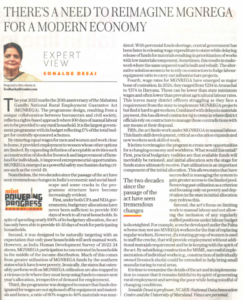
The two decades since the passage of the act have seen tremendous changes
The year 2025 marks the 20th anniversary of the Mahatma Gandhi National Rural Employment Guarantee Act (MGNREGA). The programme design, resulting from a unique collaboration between bureaucrats and civil society, reflects a rights-based approach where 100 days of manual labour are to be provided to any rural household. It is the largest government programme with its budget reflecting 17% of the total budget for centrally sponsored schemes.
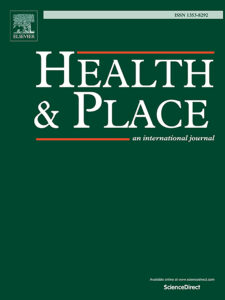
While the dominant patterns of migration for livelihood among the poor in India are rural-to-rural and circular, literature on the health implications of child migration has largely focused on rural-to-urban, permanent movement. We compared child growth across three migration typologies rural Bihar: circular migrant families that repeatedly migrate to rural destination sites with accompanying young children, rural households with male migrants, and rural households that do not engage in migration. We integrated network theory based on caste and tribe geography to inform our analytical approach. Our results demonstrate complex associations between nutrition status and repeated movement of children between home and destination spaces. In addition to the policy imperative of multilocational strategies for migrant families, households that do not engage in migration yet are located in high outmigration regions also require targeted livelihood and health interventions.
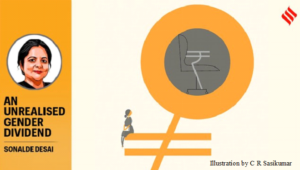
Of the four key areas that define women’s empowerment, personal efficacy, power in intra-household negotiations, societal engagement, and access to income-generating activities, we see improvements in the first three domains. In contrast, the fourth — access to employment — has stagnated.
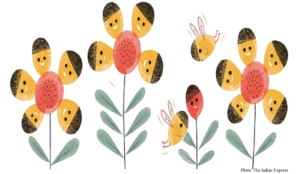
If south India wants a larger population, it needs to focus on family-friendly policies or encourage migration from more populous states.
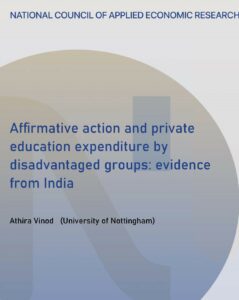
Under the Right to Education Act (2009), the Indian government mandated private schools to reserve 25% of primary school places for socioeconomically disadvantaged children. This study examines the policy’s spillover effect on private schooling costs. Using household survey data and a difference-in-differences approach, it compares private school fees for disadvantaged children across two age cohorts and survey rounds. Findings show fees decreased by ₹223–₹844 (0.05–0.25 SD) post-policy. A 5% enrolment increase led to a fee reduction of ₹240–₹470 (0.05–0.14 SD). The effects are driven by an increased supply of low-fee private schools facilitating cheaper private education for disadvantaged children.










